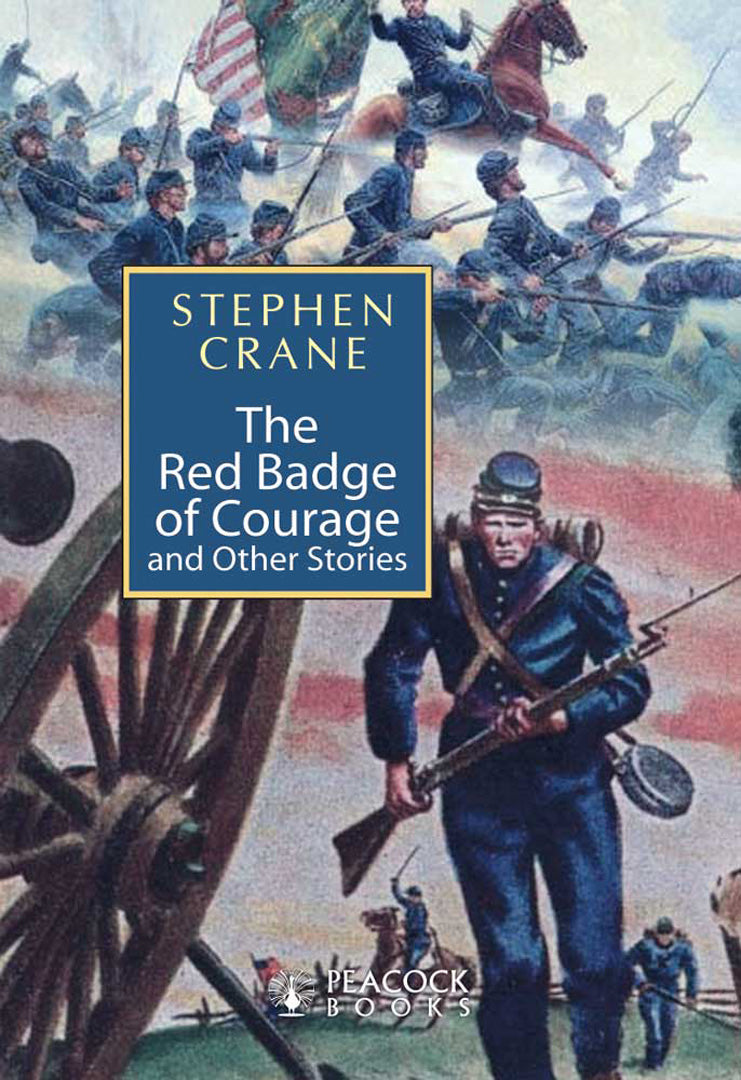The Red Badge Of Courage And Other Stories
The Red Badge Of Courage And Other Stories
Stephen Crane
Couldn't load pickup availability
Share

More Information
- ISBN13:
- Publisher: Atlantic Publishers & Distributors (P) Ltd
- Publisher Imprint: Peacock Books
- Publication Date:
- Pages: 174
- Binding:
- Item Weight:
- Original Price:
About The Book
Stephen Crane’s The Red Badge of Courage is a war novel, first published in 1895. Taking place during the American Civil War, it is the story about Henry Fleming, a young soldier of the Union Army, who flees from the battlefield. Overcome with shame, he longs for a wound, a “red badge of courage”. Having escaped into a nearby forest, he finds a group of injured men returning from the battle. A “tattered soldier” asks him where he is wounded, but he dodges the question. Among the group is Jim Conklin, who has been shot in the side and is suffering delirium from blood-loss. Jim eventually dies of the injury, defiantly resisting aid from his friend. Henry runs away from the injured soldiers and joins a retreating column that is in disarray. In the panic that ensues, a man hits Henry on the head with his rifle, wounding him. Exhausted, hungry, thirsty, and now wounded, Henry returns to his regiment, regardless of his shame. At the camp, other soldiers believe that his injury resulted from a grazing bullet during battle. They take care of him and dress his wound.
The Red Badge of Courage received widespread acclaim shortly after its publication, making Crane an instant celebrity at the age of twenty-four. Adapted several times for the screen, the novel became a bestseller. Avoidance of political, military, and geographic details of the conflict between the states, and the omission of dates and names of places and battles, effectively shift attention away from historical patterns in order to concentrate on the emotional violence of battle in general.
About The Author
STEPHEN CRANE (1871 – 1900), an American poet, novelist and short story writer is regarded as one of the most innovative writers of his generation. His writings are characterized by vivid intensity, distinctive dialects and irony. His novels evince naturalistic and realistic concerns like ideals versus realities, spiritual crises and fear, and social isolation.
Although Crane is recognized primarily for The Red Badge of Courage, which has become an American classic, he is also known for his poetry, journalism, and short stories such as “The Open Boat”, “The Blue Hotel”, “The Bride Comes to Yellow Sky”, and “The Monster”. Critics find striking similarities between the stylistic techniques in Crane’s writing and Impressionist painting, which have led people to believe that he was not only an Impressionist, but was also influenced by the movement.
Crane was fascinated by war and death, fire, disfigurement, fear and courage, and he wrote many works based on these concepts. The subject matter for his stories varied extensively to include industrialization, immigration and the growth of cities and their slums. The Little Regiment, a collection of six short stories covered familiar ground with the American Civil War.
Crane’s poems, which he called “lines”, are typically not given as much scholarly attention as his fiction. He once said that his overall poetic aim was “to give my ideas of life as a whole, so far as I know it”.
Today, Crane is considered one of the most innovative writers of the 1890s. His peers, like Joseph Conrad and Henry James and later writers such as Robert Frost, Ezra Pound and Willa Cather hailed Crane as one of the finest creative spirits of his time. His writing made a deep impression on Ernest Hemingway and many other 20th-century writers.

